This year the iPhone 13 Pro is the iPhone to buy, with features like the 120Hz ProMotion display and 3x telephoto camera justifying the extra cost.
Should I Buy The Apple iPhone 13 Pro?
Pros
- 120Hz ProMotion display
- Fantastic camera
- Excellent battery life
Cons
- Slow charging
- No always-on display
- Smaller notch doesn't improve things
- Expensive
Our Verdict
Price When Reviewed
- From $999
With four phones in the iPhone line-up, the 13 Pro has a tough job to do: it has to prove itself not only against stiff Android competition but also against the iPhone 13 itself, to justify why someone should pay extra for ‘Pro’ features in a phone that’s otherwise essentially identical.
That’s a test that last year’s 12 Pro failed miserably, with the cheaper 12 clearly the better buy. This year the tables have turned, and the 13 Pro looks like the winner of the 2021 iPhone line-up. Whether that’s because Apple has improved the 13 Pro so or needlessly held back features from the regular 13 will mostly depend on your level of cynicism, but the end result is the same: this is the best iPhone this year.
Is the best iPhone good enough anymore? For iOS devotees certainly, though those open to switching sides will find stronger stills cameras and slicker hardware in the best Android phones, though Apple has caught up on key ground this year – most notably in some phenomenal improvements to battery life.
Design And Build
- Premium stainless steel design
- Smaller notch
- Excellent water-resistance
Apple remains cautious in updating the iPhone design, and so the 13 Pro will look very similar to anyone who used last year’s 12 Pro. That means a familiar notch, squared-off stainless steel sides, and welcome Apple touches like the physical slider to set the phone on Silent.
This year Apple has fractionally shrunk the notch that cuts into the top of the screen, but unless you set this phone side-by-side against one of last year’s you’d be hard-pressed to spot it. The phone’s software certainly doesn’t do much with the extra screen space - you'll see the same notification icons on either side no matter what - and welcome as this change is, it’s not big enough for anyone to bother upgrading over.
The reduced notch still packs all of the same Face ID tech as before – it's simply been condensed – but Apple still hasn’t found space to squeeze in one of the Touch ID power buttons found on a few of the recent iPads. That was always annoying, but especially so given Face ID’s well-documented difficulties with face masks.
And while the front camera space has shrunk, the back is ballooning. There are still three lenses, but new larger sensors have prompted Apple to enlarge the whole camera module, which now takes up more of the phone’s rear and protrudes further from it too. This was never the best-looking phone camera in the world and making it bigger certainly hasn’t helped, but I doubt it’ll bother many people too much.
I’ve been reviewing the 13 Pro in its gold finish, which I’ll admit is a bit garish for my tastes, but I know it has its fans. If it’s not for you either, then rest assured that silver and graphite return from last year’s line-up, along with the new (and rather striking) ‘Sierra Blue’, a lighter replacement to last year’s Pacific hue.
As with all iPhones you can expect an IP68 waterproof rating, while the display is coated in Apple’s custom Ceramic Shield finish for extra durability.
Display
- Smoother 120Hz ProMotion refresh rate
- 6.1in OLED with great colour
- Notch and thick bezel remain
For many, the display will be the reason to upgrade to the 13 Pro – and certainly the biggest reason to choose this phone over the similarly-sized iPhone 13.
Both models have 6.1in OLED displays with support for HDR, True Tone, and all the usual extras. Only the Pro (and the larger, 6.7in Pro Max) boast extra brightness and a crucial upgrade: 120Hz refresh rates, officially dubbed ‘ProMotion’.
Much like the move to higher resolution Retina displays, this is the sort of upgrade that’s hard to describe and some may not even notice in isolation. It becomes apparent when going back to a 60Hz display, though; after using the 13 Pro my iPhone SE from last year feels laggy in comparison, even in simple tasks, like flicking between home screens or open apps.
This dynamic refresh rate tech is less common – though not unheard of – on the Android side, though phones like the Oppo Find X3 Pro and OnePlus 9 Pro can drop to an even slower 1Hz, when needed.
As an Android user the majority of the time, the combination of the notch and thick (by modern standards) black bezel, running around the display still frustrates me, and I look forward to seeing what Apple has in store with a redesign next year. I can’t fault the quality of the panel itself though, which is finally back where it should be, among the best in the market.
Specs And Performance
- The most powerful phone around (for now)
- 25% faster than last year's iPhone 12 Pro
- 1TB storage option
Every new iPhone series brings with it an updated chipset, and this is no different, with the 5nm A15 Bionic now calling the shots.
Comparing iPhone chips to Android feels a little fruitless, but neither side could disagree that the iPhone 13 Pro will stand toe-to-toe with any Android phone in the market on pure power, and often excel – particularly in specific tasks, like video rendering.
In our testing the 13 Pro has improved roughly 25% year-on-year in CPU performance, while in our graphical benchmark we saw a 19% jump. Benchmark scores are consistently above the best Android devices of the last year, though bear in mind that the framerate gap on graphical tests is closer than it seems, with the Android flagships boasting higher resolution displays that require more graphical processing power.
This latter test did throw up one wrinkle worth flagging: since 120Hz support has to be coded manually, apps won’t all make the most of this tech from day one. GFXBench remained capped at 60fps, rather than hitting the higher frame rates the display should now allow, a problem also likely to be encountered in many games and other apps; at least in the short-term, as devs work to bake in full support.
This is also the first year that Apple has offered up to 1TB of storage on an iPhone, though Apple charges a few hundred for the upgrade. Anyone who makes use of iCloud and other cloud storage will probably be happy enough with the 128GB base option, though consider more if you expect to take full advantage of the 13 Pro’s video shooting tech.
You’ll also find NFC (for Apple Pay) and Ultra-Wideband or UWB (for the enhanced Find My tech that powers the AirTag), along with Bluetooth 5.0 and Wi-Fi 6. Neither of those latter two are the absolute latest standards available, but at this point we’re really quibbling.
Battery And Charging
- Phenomenal two-day battery life
- Slow (23W) wired charging
- MagSafe (15W) and Qi (7.5W) wireless charging
If there’s one area where Apple has undoubtedly lagged behind Android for the last few years, it’s battery life. So you’ll forgive me for scoffing slightly when the company promised “the best battery life on iPhone ever” this time around. Some promise, right?
Reader: I was wrong.
With light use, the 13 Pro lasts me two days, though admittedly that does run it down to the single digits by bedtime on day two. Typical use still sees it comfortably last a full day, and I expect it will remain this way for a couple of years, even with battery degradation.
I’m sure someone committed could drain the battery in a day – heavy gaming or extensive video capture would probably do the trick – but I doubt the average user will see such happen any time soon. That’s a huge step forward for Apple, and sees the new iPhone not just hold pace with the best Androids but actually outlast many of them – I can’t remember the last time that happened.
While some of the top Android phones can now fully charge in less than half an hour – and even offer wireless speeds that aren’t much slower – Apple only advertises 20W max speeds for the 13 Pro, which it says can deliver a 50% charge in half an hour.
In fact enterprising testers have discovered that the 13 Pro seems to cap at 23W speeds – fractionally better, but still. As such, if you do plan on pairing your Pro with a new charger to match you shouldn't look for anything much past 25W, as you won't see any additional benefit.
And of course, you may well need to buy one, as Apple no longer ships a charger with the phone. It’s still Lightning too, with no sign that the company ever intends to shift the iPhone to USB-C, meaning this won’t even use the same charger as any recent iPad or MacBook you may own.
Camera
- Consistent camera upgrades since last year
- Struggles with bright light sources, even in daytime
- Cinematic mode impresses
Apple primarily pushes shoppers towards its Pro models based on their camera features, and while this year’s 120Hz display upgrade will be a major appeal for many, the additional cost over the regular iPhone 13 only really makes sense if you’re also expecting to make the most out of the phone’s photography prowess.
At a glance, the rear camera here looks similar to the 12 Pro’s – except that it’s larger – and, once again, you’ll find a main lens, an ultrawide and a telephoto sensor. Each of them has been upgraded though, and the results are undeniably impressive.
The real test is in low light, which is where the new sensor and aperture should make all the difference. Here the 13 Pro does an excellent job of stabilising shots and capturing detail, but dimmer light also exposes a problem that also occasionally crops up in the daytime: dynamic range.
The 13 Pro’s main camera – and indeed its other lenses, but we’ll get to them – consistently over-exposes bright light sources at the expense of other elements of the shot. This is clearest when shooting sunsets or street scenes at night, but daytime glare can be just as troubling.
This is the sort of issue that Apple can probably fine-tune over time, but does put an immediate damper on any promise that this is the best camera phone around.
There’s more than one lens here though. The ‘most improved’ award would surely go to the ultrawide, which has leapt from f/2.4 to f/1.8, making it one of the widest apertured ultrawide cameras in any phone.
The ultrawide has another new trick. Now capable of focusing on subjects as close as 2cm, it doubles as a macro lens – and a very good one at that. Instead of a low resolution dedicated macro shooter, you get to wield the full power of the ultrawide. Results still aren’t perfect – finding focus can sometimes be tricky, and for anything closer than 2cm this won’t work at all – but it’s an excellent option to have.
The only real irritation is that, right now, it turns on automatically as you approach a subject, which is a little jarring, especially since it does so from far further away than the 2cm focal length. It’s downright unusable if you want to frame a shot from just the distance it switches out, as the slightest move will have the cameras switching back and forth constantly. Fortunately, Apple is rolling out a toggle to turn this mode off, though it’s not available yet.
The 3x optical zoom lens (up from 2x in last year’s model) is a mixed blessing. The longer zoom distance is obviously an advantage when shooting distant subjects, though I find it trickier to use for portrait photography – you'll need to back away from your subject a fair bit. It’s also still a far cry from the 5x and 10x lenses found on some Samsung and Xiaomi flagships, though you may not mind that.
I was worried the narrower aperture of f/2.8 would also limit the lens, but in fact, the telephoto still holds its own – even in low light and Night Mode shots. It has the same problems with blowing out light sources as the other lenses but for the most part shares their strengths too.
If the 13 Pro mostly matches Android’s best on stills, Apple at least comfortably holds onto the crown when it comes to video, which is crisp, smooth and stable, no matter which lens you use. The cameras here are still capped at 4K@60fps – no 8K, though who needs it? – but will soon support Apple's own ProRes video format too, though sadly this isn’t ready just yet.
While filming the camera app will do its best to intelligently pick the best focus point, picking out faces and animals, and will adjust this on the fly. This side of the tech isn’t perfect just yet, but the ability to quickly and easily change focus points in the video after filming make this a moot point. The only real downside is a limit to HD resolutions, rather than 4K, but this is far from a dealbreaker.
As you’d expect the selfie camera excels too. This 12Mp, f/2.2 camera is still one of the best front-facing cameras around and is capable of all the same software tricks – including 4K video and Cinematic Mode – that really help set itself apart.
Software And Updates
- iOS 15 out of the box
- New notification management tools
- Long-term software support guaranteed
The iPhone 13 series are the first iPhones to ship with iOS 15 – though, of course, this will already be available to you if you’re already on an iPhone (at least any from the 6s onwards).
Notification Summary is perhaps the biggest improvement, and the next step in Apple’s ongoing efforts to improve iPhone notifications – long the platform’s weak spot. Now you can lump certain notifications – news updates, Netflix content drops, or Instagram follower pings – into summaries that arrive at set intervals during the day, leaving only the highest priority alerts to pop up the moment they're initially issued.
Along similar lines, the new Focus Modes allow you to create tailored profiles – work, home, sleep, gym, etc. – which each bring their own unique home screens, notification settings and Do Not Disturb configurations.
There are smaller changes throughout, including new features for FaceTime, iMessage and Apple Maps, and the clever ability to capture text from photos. These are unlikely to radically alter the way you use your iPhone though.
The only major omission is an always-on display – I dearly miss being able to spot the time and notifications at a glance without waking my phone up. This is another area where Apple feels curiously behind the times, and with dynamic refresh rate supported and the battery life enhanced, there’s no longer any hardware justification for this software shortcoming.
Of course, small faults like this are made up for by Apple’s commitment to long-term software support. While things are improving elsewhere, with most flagships now offering two or three years of Android updates, nobody can beat Apple for sheer longevity. If you want to buy a phone now and keep using it for five years, it really has to be an iPhone.
Price And Availability
The iPhone 13 Pro is available now from Apple, Amazon, and more. It isn’t a cheap phone, even at its starting price, and it quickly becomes a very expensive one as you add on storage:
- 128GB: £949/US$999/€1,159
- 256GB: £1,049/US$1,099/€1,279
- 512GB: £1,249/US$1,299/€1,509
- 1TB: £1,449/US$1,499/€1,739
You’ll be paying roughly £170/US$200/€250 extra for the Pro over the regular iPhone 13 at each storage point (though there’s no 1TB option for that model), though that feels like a reasonable premium for the 120Hz display, telephoto lens, and other extra features dotted throughout. I’d say the display alone makes the extra cost worth it for many, though do consider how much you’ll really appreciate the extras.
There's also the 13 Pro Max, which costs a little more. Unlike last year, this features essentially identical specs to the Pro, so is only worth considering if you want to pay extra for a larger display and a bigger phone; though you can also expect slightly improved battery longevity out of it too. Similarly, the 13 Mini matches the specs of the regular 13, but in a more petite form factor.
Check out our ranking of the best flagship phones from either operating system to get a better sense of the competition and how the 13 Pro stacks up, or our current iPhone ranking to find out how the other Apple models compare.
Verdict
The iPhone 13 Pro is this year's best iPhone. The 6.1in display is the most comfortable size for most users, and the combination of the 120Hz refresh rate and camera improvements across the board makes this worth the extra cost over the base iPhone 13.
By Android standards, the comparison is trickier. On pure performance, the 13 Pro holds its own against any phone out there, and for video recording it's unmatched. The best phones from Samsung, Xiaomi, and Vivo currently have Apple beat on stills photography, but these days there's not much in it, and this remains an exceptional camera to find in a phone.
By adopting 120Hz and fixing the battery life, Apple has finally closed ground on its two biggest recent weak points and charging speeds now remain the biggest gap between top iPhones and the competition - though I suspect many will find Apple's offering perfectly sufficient.
Ultimately, it's iOS 15 and Apple's design language that will tempt people to the iPhone 13 Pro as much as anything else. If you're a fan of Cupertino's work, this is as good an example as any of what the company can do with mobile hardware, and the drawbacks now feel few and far between - so long as you can afford it.
SPECS
- DISPLAY
Size:6.1 inches
Resolution:2532 x 1170 pixels, 19.5:9 ratio, 457 PPI
Technology:OLED
Refresh rate:120Hz
Screen-to-body:87.24 %
Peak brightness:1200 cd/m2 (nit)
Features:HDR support, Oleophobic coating, Scratch-resistant glass (Ceramic Shield), Ambient light sensor, Proximity sensor
- HARDWARE
System chip:Apple A15 Bionic
Processor:Hexa-core, 64-bit, 5 nm
GPU:Yes
RAM:6GB
Internal storage:128GB, not expandable
Device type:Smartphone
OS:iOS (15.x)
This device has different variants: View all
- BATTERY
Capacity:3095 mAh
Type:Li - Ion, Not user replaceable
Charging:USB Power Delivery, Qi wireless charging, MagSafe wireless charging
Max charge speed:Wired: 20.0W; Wireless: 15.0W
- CAMERA
Rear:Triple camera
Main camera:12 MP (OIS, PDAF)
Specifications:Aperture size: F1.5; Focal length: 26 mm; Pixel size: 1.9 μm
Second camera:12 MP (Telephoto, OIS, PDAF)
Specifications:Optical zoom: 3.0x; Aperture size: F2.8; Focal Length: 77 mm
Third camera:12 MP (Ultra-wide, Autofocus)
Specifications:Aperture size: F1.8; Focal Length: 13 mm
Video recording:3840x2160 (4K UHD) (60 fps), 1920x1080 (Full HD) (240 fps), 1280x720 (HD) (30 fps)
Features:OIS, HDR, Time-lapse video, Continuous autofocus, Picture-taking during video recording, Video light
Front:12 MP (Time-of-Flight (ToF), EIS, HDR, Slow-motion videos)
- DESIGN
Dimensions:5.78 x 2.81 x 0.30 inches (146.7 x 71.5 x 7.65 mm)
Weight:7.20 oz (204.0 g)
Materials:Back: Glass; Frame: Stainless steel
Resistance:Water, Splash, Dust; IP68
Biometrics:3D Face unlock
Keys:Left: Volume control, Other; Right: Lock/Unlock key
Colors:Graphite, Gold, Silver, Sierra Blue
- CELLULAR
5G:n1, n2, n3, n5, n7, n8, n20, n25, n28, n38, n40, n41, n48, n66, n71, n77, n78, n79
LTE (FDD):Bands 1(2100), 2(1900), 3(1800), 4(AWS-1), 5(850), 7(2600), 8(900), 12(700 a), 13(700 c), 14(700 PS), 17(700 b), 18(800 Lower), 19(800 Upper), 20(800 DD), 21(1500 Upper), 25(1900+), 26(850+), 28(700 APT), 29(700 d), 30(2300 WCS), 32(1500 L-band), 66(AWS-3), 71(600)
LTE (TDD):Bands 34(2000), 38(2600), 39(1900+), 40(2300), 41(2600+), 42(3500), 46, 48(3600)
UMTS:Bands 1(2100), 2(1900), 4(1700/2100), 5(850), 6(800)
Data Speed:LTE-A, HSDPA+ (4G) 42.2 Mbit/s, HSUPA 5.76 Mbit/s, UMTS
Dual SIM:Yes
SIM type:Nano SIM, eSIM
HD Voice:Yes
VoLTE:Yes
- MULTIMEDIA
Headphones:No 3.5mm jack
Speakers:Earpiece, Loudspeaker
Features:Dolby Atmos
Screen mirroring:Wireless screen share
Additional microphone(s):for Noise cancellation
- CONNECTIVITY & FEATURES
Bluetooth:5.0
Wi-Fi:802.11 a, b, g, n, ac, ax (Wi-Fi 6), dual-band; MIMO, Wi-Fi Direct, Hotspot
USB:Lightning
Features:Charging, Headphones port
Location:GPS, A-GPS, Glonass, Galileo, BeiDou, QZSS, Cell ID, Wi-Fi positioning
Sensors:Accelerometer, Gyroscope, Compass, Barometer, LiDAR scanner
Other:NFC, UMA (Wi-Fi Calling)
Hearing aid compatible:M3, T4
- REGULATORY APPROVAL
FCC approval:
Date approved:Sep 14, 2021
FCC ID value:BCG-E4000A
Measured SAR:
Head:0.96 W/kg
Body:1.45 W/kg
Simultaneous Transmission:0.96 W/kg
Wireless Router:0.96 W/kg



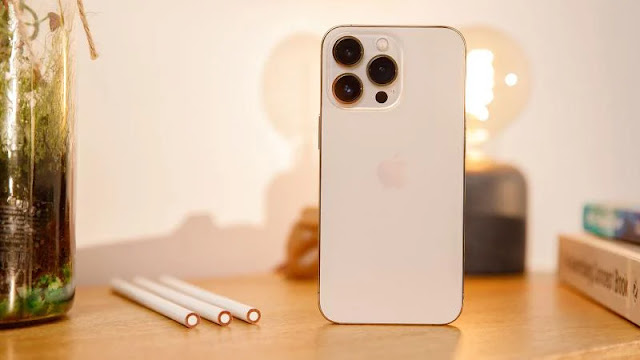
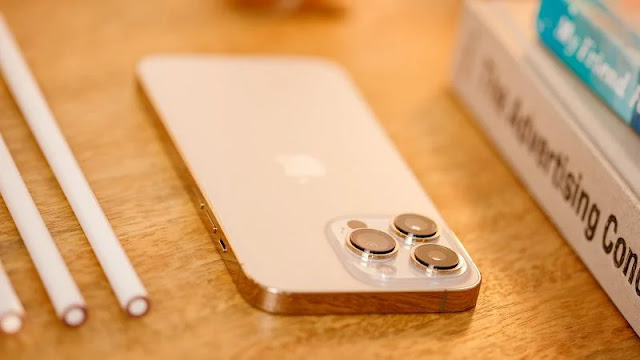

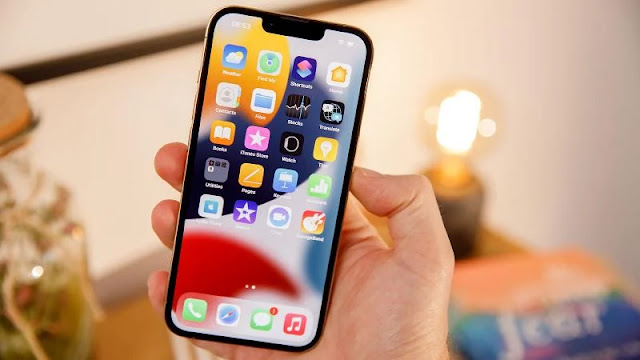
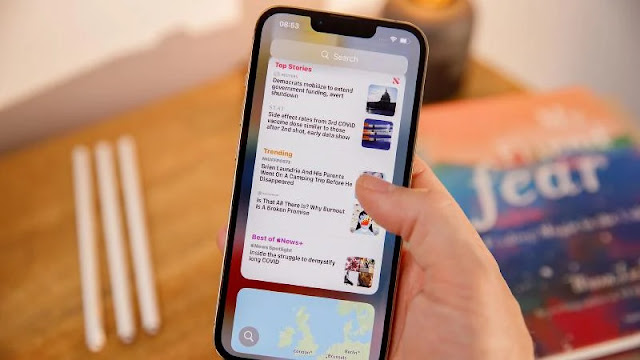

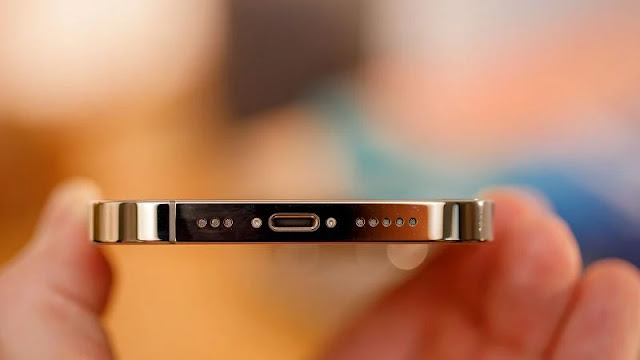












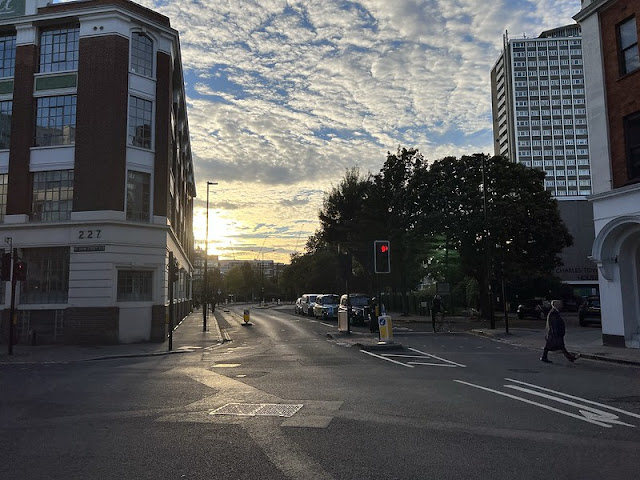









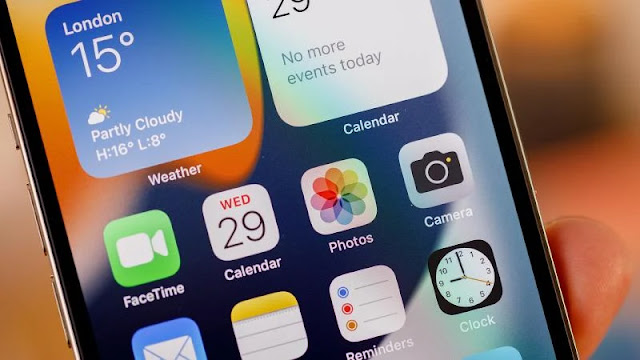


0 comments:
Post a Comment